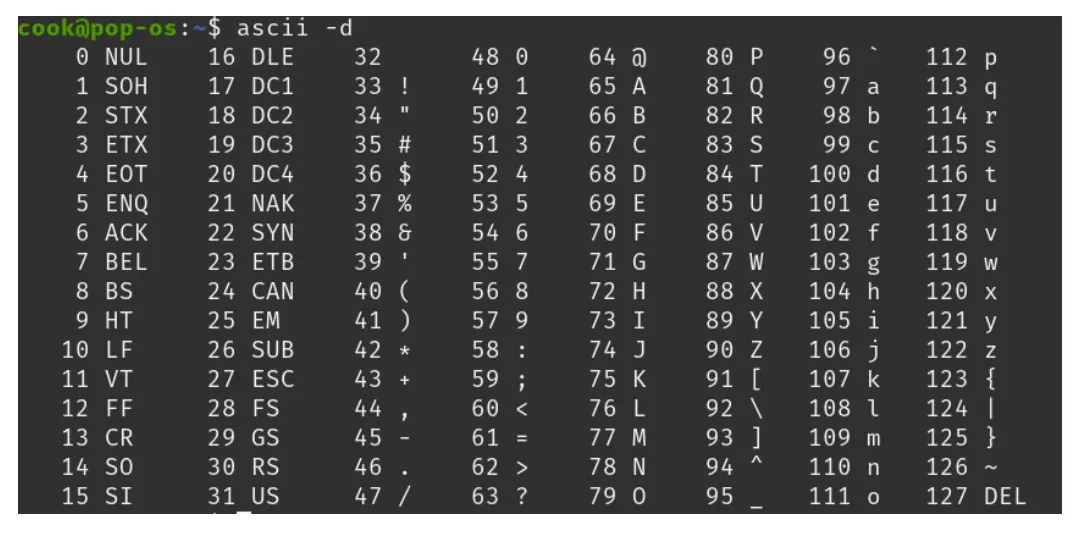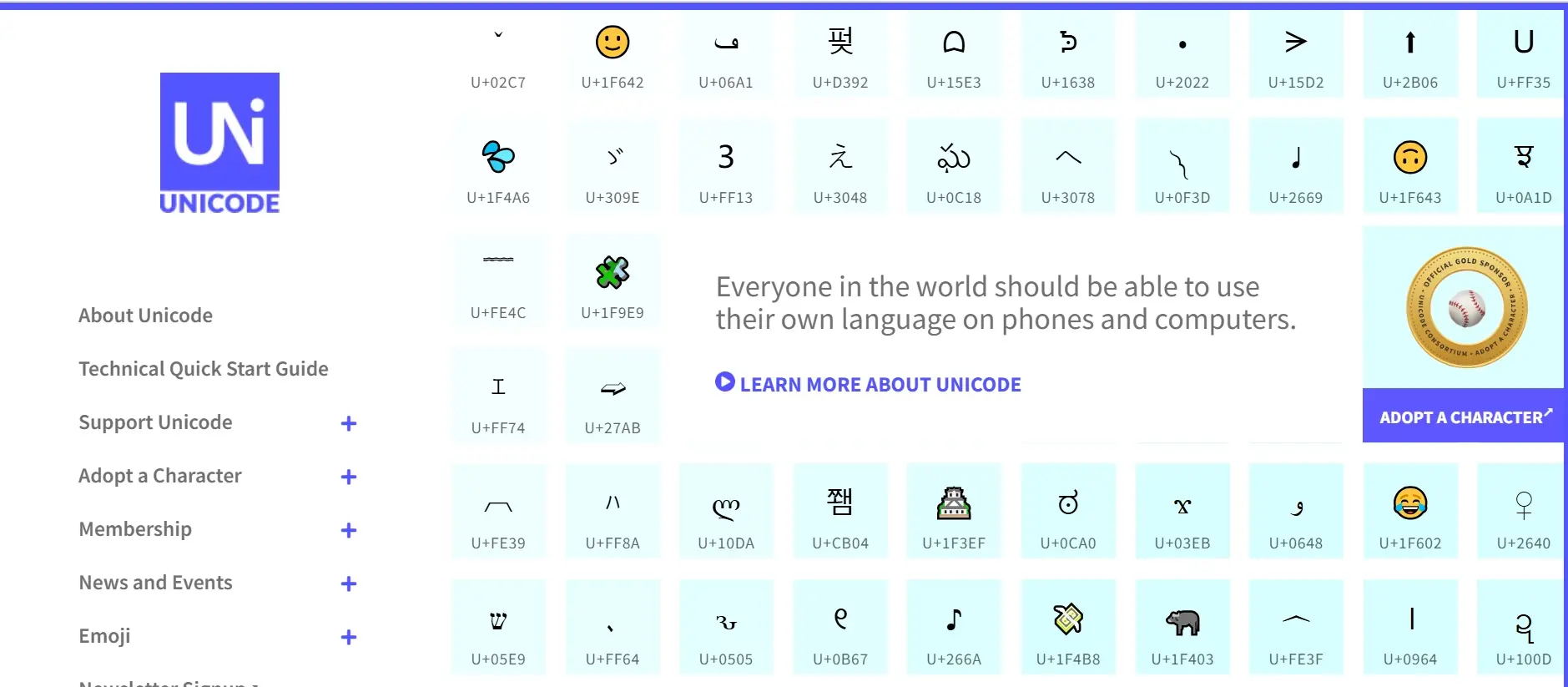Data transformation involves converting data from one format to another for analysis, transmission, or storage. Various methods such as encoding and encryption are used to store and analyse data depending on its use.
For example, encoding data ensures compatibility and consistency, especially when data is transferred from one system to another, while encryption ensures confidentiality by converting data into an unreadable format that becomes meaningful when it is decrypted using a decryption key.
Let us explore the difference between encoding and encryption further.
What is Encoding?
Encoding is a process of converting data in formats that can be understood by different types of machines or systems. It is considered to be a language that the sender and receiver must understand for proper communication.
There are different types of Encoding, and one of the most common is character encoding.
Character Encoding
This represents text in digital systems. To communicate with computers to perform various tasks, the computer has to understand the instructions we give it, but the computer understands 0s and 1s, and since we don't use binary in communicating, encoding translates our human text to something that machines understand.
Different types of character encoding formats include;
American Standard Code for Information Interchange (ASCII)
ASCII is a character encoding that maps 0s and 1s into characters, and It is one of the earliest standards of representing data.
The idea behind ASCII is to assign a number to each character. For example, "A" is assigned the number 65, "C" is assigned 67, and because computers use binary, the numbers can be converted into binary format that machines convert to store and process text.
ASCII uses numbers 0 to 127, and they are represented as so;
- 0-31 are control characters that aren’t printable
- Backspace is represented by the number 8
- A new line is represented by 10
- Carriage return is represented by 13
- 32-127 are printable characters, including
- ! is represented by 33
- 0 is represented by 48
- & is represented by 38
Here’s a visual representation of the ASCII table

Src: https://www.johndcook.com/blog/2022/05/28/how-to-memorize-the-ascii-table/
Uppercase and Lowercase letters are represented differently in ASCII. For example, letter "A" is represented by the number 65, while the lowercase letter "a" is represented by 97
ASCII uses 7 bits to represent each character. But what does this mean?
- A bit or binary digit is the smallest unit of data a computer can store and process, and it can hold two values, 0 or 1
- With 7 bits, 2 is represented as 2**7 = 128, which means 7 bits can hold 128 possible values.
- Since we count from 0, the values range from 0 to 127 instead of 1-128. The range is used to represent control characters, numbers, uppercase letters, lowercase letters, and basic symbols.
Unicode

This is a universal standard character encoding that represents text and symbols from every writing system worldwide, including Latin, Arabic, Chinese, and many others.
Before Unicode, different encoding systems often led to unreadable characters when sharing data across systems. Unicode made it possible to share documents across the globe and ensures that when it gets to its destination, it will appear as intended.
Unicode assigns a unique number to every character regardless of language or program.
Features of Unicode include;
Universal Coverage: Unicode aims to encode all characters used in writing systems around the world, including letters, symbols, punctuation, emoji, and mathematical symbols
Unique Code Points: Each character in Unicode has a unique code point written in hexadecimal. For example, letter 'A' has the code point U+0041
ASCII Compatibility: Unicode is designed to build upon ASCII systems. The first 128 Unicode code points (U+0000 to U+007F) match the characters in the original 7-bit ASCII table.
Flexibility: Unicode is flexible, allowing new additions of characters that support evolving communication and language needs.
There are different ways of implementing the Unicode standard, known as Unicode Transformation Formats . UTFs are how Unicode points are stored or transmitted over a network.
Encoding formats that transform Unicode code points into bytes, include:
- UTF-8: is a common text encoding on the Internet. It uses 1-4 bytes to store a character; it doesn't consume a lot of space, and it's compatible with ASCII

If you’ve ever noticed in your HTML boilerplate, it simply tells the browser to use the UTF-8 character encoding when displaying the content of the web page.
- UTF-16: is a variable-length encoding that stores a character using either 2 or 4 bytes. It is used for languages that have a lot of characters.
- UTF-32: stores each character using 4 bytes. It is a fixed-length encoding like ASCII, but it consumes more space, so it's not commonly used.
ISO-8859
This is an eight-bit extension of ASCII developed by the International Organization for Standardization (ISO). ASCII includes characters ranging from 0 to 127, and ISO-8859 extends this with an additional 128 characters from 128 to 255. These characters include symbols like the American cent, diacritics, and special punctuations in various languages.
There are different variations of 1S0-8559, including:
Latin-1(1S0-8559 -1): Western European Languages like English, French, Spanish, Portuguese
Latin-2(1S0-8559 -2): Non-Cyrillic Central and Eastern European languages like Polish, Czech, Hungarian
Latin-3 (1S0-8559 -3): Southern European languages and Esperanto
Latin-5 (1S0-8559 -9): Turkish Language
- Latin-6 (ISO-8859-10): Northern European and Baltic Languages like Finnish, Estonian, and Icelandic
Other ISO-8859 Encodings include:
- ISO-8859-5: Cyrillic Script used in Russian, Serbian, etc
- ISO-8859-6: Arabic Script
- ISO-8859-7: Greek
- ISO-8859-8: Hebrew
ISO-8859 caters to different writing systems and offers region-specific encodings.
ANSI CODE(Windows-1252): ANSI CODE is an encoding standard used in early versions of Microsoft Windows applications and is mainly associated with western European languages
It has become outdated due to the introduction of encoding standards like Unicode which has become the choice for modern applications as it represents characters from languages worldwide.
Benefits of Encoding
Some benefits of encoding include:
- Encoding simplifies data transmission across networks.
Encoding ensures that systems and devices understand and process data across different platforms and languages.
Encoding offers multilingual support, making it easy to display and use text in multiple languages
Encoding allows data to be stored in a compact format.
What is Encryption?
Encryption is a process of converting data into an unreadable format, which can later be converted back into a readable format using a key.
In a previous article about encryption, we explained in detail the importance of encryption. You can check it out through this link.
Now, let's briefly review why encryption matters and highlight some emerging encryption trends that can raise security standards.
Why does Encryption Matter?
Encryption is a cybersecurity tool that helps keep data and systems secure from unauthorised access and cyber threats.
Despite advancement in cyber security tools and method, cybersecurity is not 100% fool proof. Bad actors always find new ways to break into systems.
Several encryption methods can help raise security standards. They include:
Bring Your Own Encryption(BYOE): This allows businesses control over their data, allowing them to manage their encryption key without relying on cloud service providers' encryption methods. This method reduces the risk of unauthorised access to data, amongst other advantages.
Homomorphic Encryption: Homomorphic encryption is a form of encryption that allows computation to be performed on encrypted data without decryption, ensuring that data remains secure while it is being processed.
- Honey Encryption: is an additional layer of protection that links the password system to a honeychecker, which is stored on a separate server. For a hacker to retrieve a user's password, they would have to break into the password system and Honeychecker systems separately.
Honey encryption is based on honeywords. This is a decoy password associated with a user's account to detect unauthorised access by alerting the system when a fake password is used, helping to identify password leaks or brute attacks.
- Quantum Cryptography: Quantum cryptography is an advanced cybersecurity technique for encrypting and transmitting data securely.
One major application of quantum cryptography is Quantum Key Distribution (QKD). QKD allows two parties generate a shared random key to encrypt and decrypt messages, eliminating additional encryption security because when data is intercepted it becomes useless.
Encoding vs. Encryption
| Encoding | Encryption |
|---|---|
| Encoding converts data into a different format for transfer or storage. | Encryption converts data from plaintext into unreadable text to prevent unauthorised access |
| Encoding makes it possible for the correct interpretation of data by different systems. | Encryption protects data confidentiality |
| Data that can be decoded back to its original form. | Data can only be read after it is decrypted with a key |
| Encoding doesn't secure data from unauthorised access | Encryption secures data from unauthorised access |
| Encoding is used to represent characters and data across different systems. (e.g., multi-lingua support) | Encryption secures data during storage or transmission |
Summary
Encoding and Encryption are both essential in data transformation and transmission. Encoding converts data into a format that can be used across systems, while encryption is a security measure used to protect sensitive information by converting it into an unreadable format. Encoding focuses more on data compatibility, whereas encryption focuses on data confidentiality and protection.

Jessica Agorye is a developer based in Lagos, Nigeria. A witty creative with a love for life, she is dedicated to sharing insights and inspiring others through her writing. With over 5 years of writing experience, she believes that content is king.
View all posts by Jessica Agorye





















